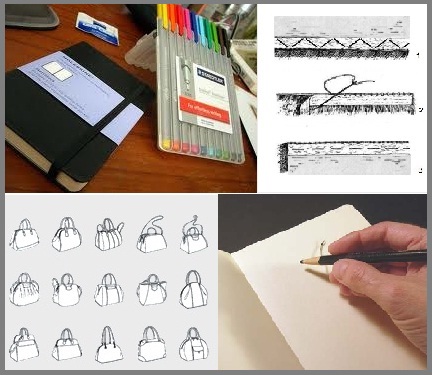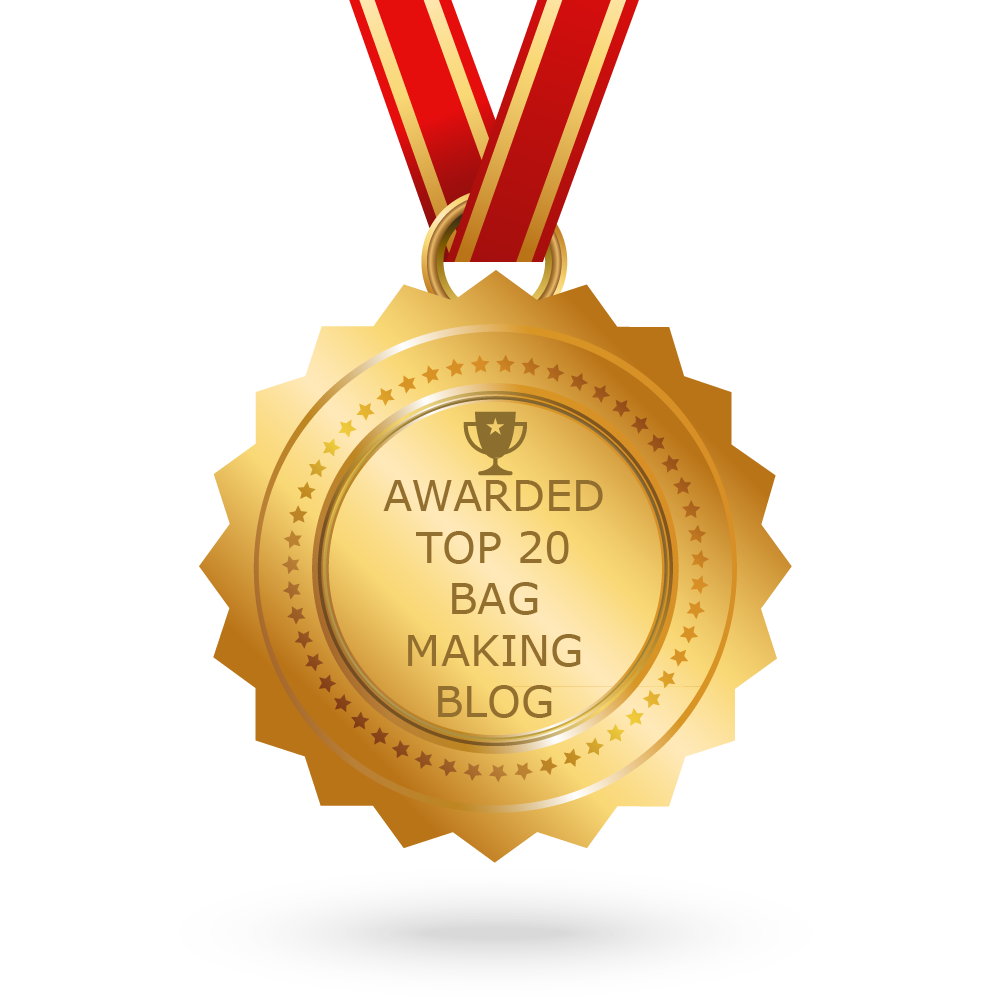People often ask me “where do you get your creative ideas?” The short answer is “from everywhere”. You have to think like a designer to be creative and innovative. While I have to admit that there are some truly talented designers out there, the fashion design world is far from how it is portrayed in the media. It is hard work, long hours, and recurring deadlines to meet.
Yet if you are skilled at problem-solving, I lay odds you are a good candidate to being a good designer. Creativity and innovation are the key.
True creativity and innovation consists of :
-
SEEING what everyone else has seen,
-
THINKING what no one else has thought, and
-
DOING what no one else has dared!
START WITH THE END USER & LIFESTYLE
The customer is always your first and most important creative challenge for a fashion designer. Listen to them! Try to observe the client’s lifestyle, her wants and needs from her point of view. Restate the wish-list in her terms and iterate until a understanding is reached. Discover not only what her desires are but what special methods or means are presently being used to solve them. I always assume anything that I design is already out there on the open marketplace… somewhere. My goal is to improve on that idea for my customer. Work together with, instead in place of, with your target market. Use imaginary product descriptions to stimulate new ideas and discussion. Remember that effective market research and sales strategy requires just as much creativity, enthusiasm and perfection as does product development.
IMPORTANCE OF ASKING THE RIGHT QUESTIONS AND MAKING A PROPER CONCEPT STATEMENT
In problem-solving, the problem as first stated is rarely the true problem. Ask at least five times and question different people. Always restate the design problem as many ways as you can: change the description, take different viewpoints, try it in sketch form, make a story board. Describe the problem to friends and also to experts in different fields. Don’t try to learn all the details before deciding on a first approach.
Make the second assault on a design problem from a different direction. Transforming one problem into another or studying the inverse problem often offers new insights. If you don’t understand a problem try explaining it to others and listening to yourself. Test the extremes. If you can’t make it better, try making it worse and analyzing what happens. Get a “sample-maker” to help: imagine how an ideal super-technician would perform the required function and then try to implement her equivalent in general mass-production. As a handbag designer, my sample-maker has saved my hide many a time.
Credit: Bottega Veneta
DEVELOP THE PROPER TOOLS AND PROCEDURES
Creative problem-solving depends on using the right tools, tricks of the trade, industry standards or methods of quality-assurance. In some cases, new tools and methods of quality-assurance must be developed from scratch by the designer before a problem can be solved and in other cases, special tools and procedures must be developed to take the final critical step of enabling successful commercial applications. Often, necessity is the mother of invention.
GETTING GOOD IDEAS FROM EVERYONE AND EVERYWHERE
Asking once is rarely effective, you have to ask many times, in many ways. Look at all possible sources of good ideas: your customers, your competition, your peers, current events, fashion forecasters, and your own subconscious. Give others some examples, this serves both to illustrate what you’re talking about and encourages them to suggest improvements to your ideas. Tell them also what [you believe] you don’t want and which solutions [you believe] won’t work. Remember that breakthrough innovations often come from the outside. Work with high performers in the trade related to your own to identify and adopt their relevant methods, tools and tricks of the trade. Trade ideas with all. Have you ever wondered how or why most fashion designers’ collections look similar each season? It is no fluke.
Credit: Le Cuir a Paris
SERENDIPITY
Serendipity is a very effective process for coming up with useful new ideas, but requires you to keep your eyes open and imagination turned on. Learn from Mother Nature (the originator of serendipity), and study the lessons or investigate any unexplained phenomena she may reveal to you. Find useful solutions by reviewing your idea book while you browse at random in libraries, trade shows, shop-the-shops, and the real world. Review your creative visions before you go to sleep at night and keep a notepad and audio recorder handy. Planning a time frame in a space where you can concentrate will help slow down your ideas so you can actually be productive with them. If you’re in a hurry or if the ideas come too fast, it’s difficult to convert them into a design. Play with combinations of ideas and concepts. Think about analogies to the problem at hand.
SEARCH FOR MULTIPLE SOLUTIONS
“Nothing is more dangerous than an idea when it is the only one we have“. The first solution found is usually inadequate or non-optimum. There is usually more than one acceptable solution. Suspend judgement and criticism when first collecting ideas (see brainstorming). Studying multiple concepts jointly often generate unique solutions. Look for solutions using combinations of ideas from different or evolving technologies. Even if you have one optimum solution it may need tweeking. Look for quality over quantity. Many novices to fashion design put all of their ideas into one product. Often I will try to “simplify” my ideas. Sometimes there is too much going on with one idea. Starting with the original concept , then taking away any detail that cannot stand on its own will lead to clarity. Keep simplifying the idea until you cannot simplify any longer without changing the whole concept of your original idea. Often, this simplified version of your creative vision is the one to put into production.
Credit: Jacobs
BRAINSTORMING
In the initial phase of a brainstorming session participants are encouraged to suggest any idea that comes to their minds. During this initial phase it is a firm rule that none of the participants can criticize or react negatively to any of the ideas that are proposed. Following sessions are used to critique the ideas; selecting, improving, modifying, and combining them to produce the final working solution. Have someone throw in ideas from Mother Nature (see Serendipity above). Encourage examination of the problem statement itself (use a separate list). Encourage ideas on improving the brainstorming process itself. Use different fashion colour and product forecasters, design relationships (storyboards, show and tell table). Use a separate list (holding area) for unclassifiable ideas. Use separate lists to record: (a) guesses as to objectives, specs, customer needs/wants, trends. (b) related areas, related businesses or companies, information sources, problem solving methods, (c) things that are “impossible”, approaches that “can’t possibly work”.
“storyboards set the mood”
.
VALUE OF EXPERIMENTATION, PLAY, EXAGGERATION & PERSISTENCE
Get your hands dirty. Spend some time trying things you “know won’t work” or “don’t know how they will work”. If you don’t fail frequently you aren’t trying hard enough and may be missing a lot of good opportunities. Value your mistakes. Believe it or not, mistakes can be beneficial. They cause us to search for a different and often, a better way. They facilitate experimentation with new materials, techniques, or styles. Mistakes, or challenges as I like to call them, are an important part of the design process because they provide unique opportunities for creativity. Always make a trial mock-up to test your pattern before cutting into your fashion fabric. Don’t be disappointed if it does not ‘turn out ‘ on the first attempt as planned; that is why mock-ups are made. These mock-ups allow you to modify the end result, correct the pattern, and work out the sewing/assembly process. Be very stubborn about solving a design problem, but be flexible about the definition of the true problem and be very flexible and open minded about the form of the solution. Persist, persist, persist!
Credit: Clara Yoo
IDEABOOKS
Idea notebooks are used to provide a visual record of your ideas and to some degree, design protection. Your idea book(s) can have many other useful, complementary functions: a recorder, a reminder, a source of ideas, a means of ensuring project continuity, and a way to communicate with yourself and within a project group. Neatness is not essential, but clarity and conformance to design standards is critical. Dated idea book may provide some legal protection if you encounter a lawsuit. Remember that patent and copyright is not the same thing. In the fashion world, you cannot patent generic ideas, only the method in which it is assembled or constructed. Copyright is relegated to product marketing such as tradenames and trademarks, not designs.
Other things that should be recorded: sources, questions, what doesn’t work, things to try. A truly effective, comprehensive design collection requires planning, team work and iteration: invite everyone to participate in finding ways around your product claims or to break them or improve on them. A one page design overview of the important procedures and design specifications should be included inside the front cover of every ideabook or look book issued.










Don, you are a true inspiration. Thank you for your turorials.
My pleasure ;0)
Awesome! I’m working on my mood boarding now, thanks for this timely expert insight!
Very useful – and since signing up for your Craftsy course I can read this and hear your voice behind it!
Thank you, Lixie.
Thank you very much for reminding me clearly the creative process of my work.
Isabel
This was great! Every design student should read this the first day in class. Then again at the start of each quarter! Thank you!